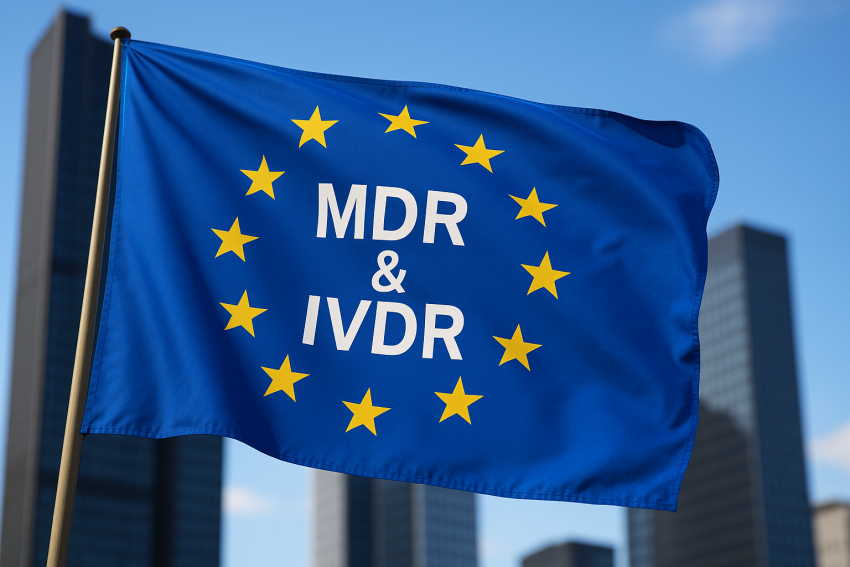Revision of MDR & IVDR regulations: timeline, challenges and impact for manufacturers in Europe

Índice de contenidos
Index of contents
Index du contenu
Inhaltsverzeichnis
Indice dei contenuti
- Context and main objective of the MDR and IVDR regulations
- Difficulties faced since their implementation
- Why Europe is considering a targeted revision of the texts
- Main areas of reform for MDR/IVDR
- Specific repercussions for manufacturers and for PRRCs/QARA teams
- Risks and points of caution during implementation
- Expected timeline and next regulatory steps
- What can you do right now? Operational recommendations
- Implications for European competitiveness and innovation
- Conclusion: a turning point for the sector — vigilance and opportunity
Context and main objective of the MDR and IVDR regulations
Since their adoption in 2017, the European MDR (2017/745) and IVDR (2017/746) regulations have had a major impact on the regulatory landscape for medical devices and in vitro diagnostics. Their main objective? To enhance patient safety, ensure market transparency, and modernise compliance requirements for health technologies.
Difficulties faced since their implementation
Despite their ambitious objectives, the practical application of the regulations has led to significant bottlenecks:
- Critical shortage of notified bodies
- Delays in certifications
- Extremely high administrative costs
- Differences in interpretation between member countries
These obstacles have resulted in potential medical device shortages, while hindering access to innovations for European patients.
Why Europe is considering a targeted revision of the texts
In response to these challenges, the European Commission launched a wide-reaching public consultation in September 2025. The objective? To gather feedback from industry stakeholders on necessary adjustments. At the same time, the European Parliament adopted a resolution in October 2024 highlighting the urgent need to reform the regulations.
Main areas of reform for MDR/IVDR
The measures proposed by professional associations (MedTech Europe, AdvaMed, EFPIA) include:
- Creation of a single European governance body
- Elimination of mandatory recertification every five years
- Easing of evaluations for low-risk devices
- Acceleration of digitalisation and remote audits
Specific repercussions for manufacturers and for PRRCs/QARA teams
These changes would have a direct impact on regulatory compliance (PRRC) and quality (QARA) managers:
- Reduction in time spent on document preparation
- Better outlook on certification timelines
- Optimisation of audits and clinical evaluations
Risks and points of caution during implementation
However, several voices are calling for caution. Excessive relief could compromise patient safety. The challenge lies in balancing regulatory efficiency with scientific rigour.
Expected timeline and next regulatory steps
The provisional timeline for the reforms is as follows:
- October 2024: Resolution of the European Parliament calling for a targeted and urgent revision of the MDR and IVDR regulations to prevent shortages and simplify regulatory processes.
- September 2025: Official launch by the European Commission of a "Call for Evidence" to gather comments and proposals from stakeholders.
- October 2025: Closure of the public consultation. More than 400 contributions were received, from industry associations, notified bodies, health authorities and manufacturers.
- March 2026: Finalisation of the regulatory impact analysis based on feedback from the "Call for Evidence".
- Second half of 2026: Presentation by the European Commission of a legislative proposal to revise the MDR and IVDR regulations.
- Early 2027 (forecast): Start of the adoption process by the European Parliament and the EU Council. Discussions will focus on the articles to be amended, the modalities of entry into force and transitional periods.
- End of 2027 - 2028: Gradual entry into force of the regulatory changes.
What can you do right now? Operational recommendations
- Update your regulatory roadmap
- Strengthen dialogue with notified bodies
- Map devices to be recertified
- Prepare an adapted regulatory transition strategy
Implications for European competitiveness and innovation
A more flexible framework could restore Europe's attractiveness for MedTech companies, particularly SMEs. It is also an opportunity to reaffirm European leadership in health technologies.
Conclusion: a turning point for the sector — vigilance and opportunity
Discussions around the reform of the MDR and IVDR regulations represent a pivotal moment. They are focused on maintaining a high level of safety while allowing innovation and market fluidity. Industry stakeholders must start to prepare for this strategic transition.
Sources :
Other articles you may be interested in:

With a background in Marketing and International Trade, Alex has always shown a passion for languages and an interest in different cultures. Originally from Brittany, France, he has lived in Ireland and Mexico before spending some time back in France and then settling permanently in Spain. He works as Chief Growth Officer at AbroadLink Translations.



Add new comment